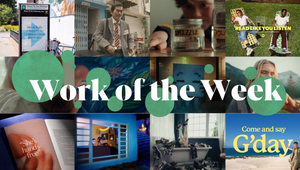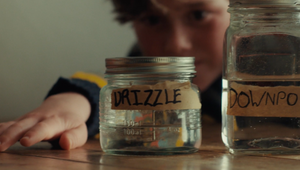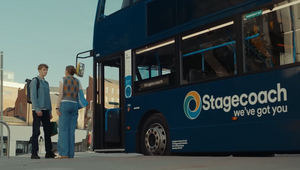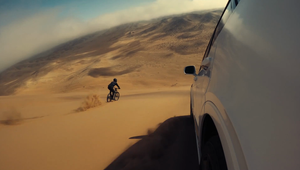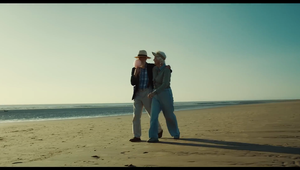
Finely Sliced: Ian McLaughlin
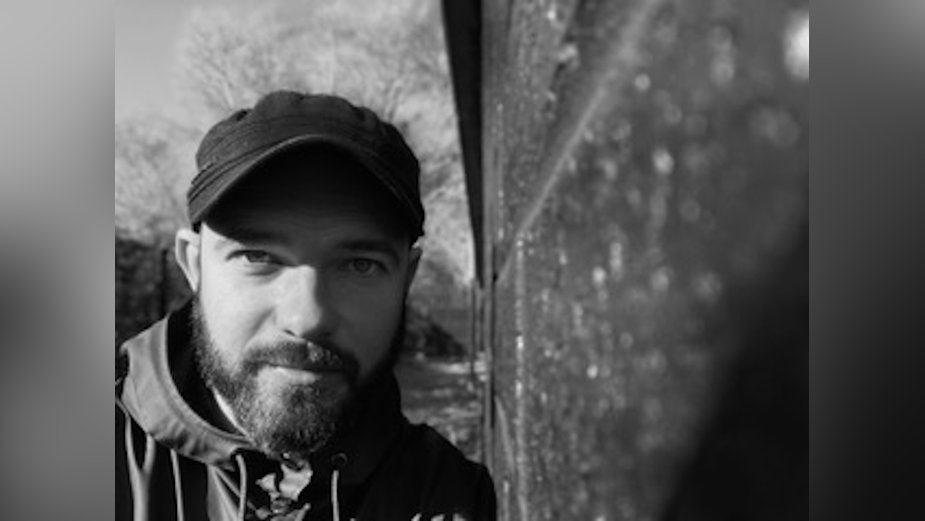
Chief's Ian McLaughlin has worked as a camera operator, filming live concerts from the age of 18 including artists such as Ian Brown, Florence and the Machine, Ellie Goulding, The Stranglers etc. He is also a keen musician, guitarist, singer and drummer and a percussionist in a band called ‘Juma’ in the early 2000’s, touring the UK.
His first post production role in VFX editing (2003) at BAFTA and RTS Award winning CGI studio ‘RED VISION’. Credits include: Touching The Void, BBC’s Battlefield Britain and ITV’s Headcases. (Staff from Red Vision went on to roles at Framestore, JellyFish, Flipbook and Realtime UK)
Ian has also had a freelance career as an offline editor with clients including: BBC, ITV, 422, The Farm, Blue Peter, BBC Sport. He has spent 10 years at Chief Productions this summer. Now joint head of post and has grown the department from two to 15 people. Editing Commercials, Music promos and Documentaries.
Agencies include: TBWA, Home, CheetemBell, BBC Creative, BJL and McCann Career to date includes work for brands: Co Op foods, Bombardier, Jet, Nokia, Sofaworks, BBC Children In Need, FootAsylum, Typhoo, Remington and many more.
The first cut is the deepest: how do you like to start an editing project?
I stand by the fact the most of the editing process is done ‘in your head’, so logging, marking and watching everything…then watching it all again!…is really THE place to start! In doing that you start to connect things and build a picture of the final film in your mind’s eye.
Often the first cut will be one of the best because of that process. If you’re organised and can put your fingers on all of the assets, you can create freely, without being restricted by admin and that way you are prepared for client comments later on, and you can react quickly to make the requested changes. So gather everything before you start! For instance, only having the camera rushes ingested is kinda like trying to bake a cake with just eggs.
Non-editors often think of editing just in technical terms but it’s integral to the emotion and mood of a film. How did you develop that side of your craft?
I think the difference between a good editor and a great one is the ability to maintain a strong balance of technical knowledge and creative ability.
I developed my editing through Apple training, reading books, learning the buttons you need to press to transfer your creative ideas to the screen. I think observation helps too; watching tonnes of films and documentaries and studying how they are put together.
Several other aspects in my career have shaped my craft though, a background in camera work helps with composition and ‘shooting for the edit’. Being a VFX editor for years, I learnt about storyboarding, sequencing, compositing and colour correction. Music production helped me get my head around the audio side too. As a Colourist, I understand colour management, grading and DIT workflows. All of that experience means I can contribute creatively at every stage of the production process.
How important is an understanding of story and the mechanics of story?
It’s really important because the audience needs to understand the film and be entertained. In commercials, it’s mainly laid out for you, but one of the first things I’ll do is read the script aloud, act it out even, feel out the pace, delivery and emotion of it. I’ll record the dialogue and add music that gives the right feeling. I treat it like a radio advert almost, how the music, voice-over and timings flow, is the backbone of the commercial. Once that is down, the pictures will fall into place easily. I’ll take a call with the director and understand the message and emotion that the agency have written, then decide how best to approach that particular job.
Rhythm and a sense of musicality seem to be intrinsic to good editing – how do you think about the rhythm side of editing, how do you feel out the beats of a scene or a spot? And do you like to cut to music?
Editing is all about rhythm and feeling. Even if there’s no music, you should have that rhythm and pacing in your mind, naturally. The timing of a sound effect, the spacing on a gag, that one epic shot on the right part of the track - all of those things make you connect and amplify your emotions.
As a musician, it’s impossible for me not to put that into my work. Music videos are probably my favourite films to edit. I love cutting to music, although you have to be careful because it can become visually quite hard and predictable to cut on beats, I tend to fold cuts in around the lyrics instead and then punctuate on the beat.
It’s not all about the music though, you have to still have a grasp of storytelling, editorial technique and documentary style film making. Something I honed in my days as a freelancer working in broadcast television.
“It’s not just about cutting pictures to music you know” an old boss once told me.
I know what he meant, but I’ve made a career out it.
I was lucky enough to write and edit my first ‘music documentary’ last year, for Blossoms, where I could bring both disciplines together, so that was rewarding.
Tell us about a recent editing project that involved some interesting creative challenges.
‘Jet - Keep on Moving' - we were asked at Chief by Isobel Agency to have a guy ride a piano through the streets, that was quite a challenge, but we jumped at the chance. It was a perfect brief for me to combine my VFX knowledge, with my edit musicality and storytelling skills. Working with the Director, DOP and Producers, I attended the shoot to VFX supervise, DIT and offline edit it as we shot. Making sure we had all the correct plates to remove the rig in post. It was a fun job to cut and it turned out really nice with everyone happy with it.
How important is your relationship with the director and how do you approach difficult conversations when there is a creative difference of opinion?
It’s very important, there’s a mutual respect and trust given to the editor from the director.
I will always speak up and argue the case if I think something should be done in a certain way, or if I think something is better, and that is always well received. I’ll often work with Directors and Storyboard Artists in Pre-Production to create animatics down to the frame. It’s at that stage that you as the Editor are pretty much directing it. It’s easier in commercials because of the duration restraints. But there’s discipline inherent in that…you have to shoot for the edit so that it all fits into the exact duration. So working closely with the Director can really help you work out any potential pitfalls before you shoot.
What’s harder to cut around – too much material or not enough?
Most people will say not enough right? Well obviously, and yeah, it’s good to have options, but I’m gonna say…too much! The reason being is that turn around times as are so tight these days and people want it…like now! So to have to trawl through 25 takes of the same line, delivered in the same way, is a waste of time. Shoot for the edit and get different options, but getting the performance in the correct timing, with exact continuity across cut points is especially important as most commercials are shot on a single camera. That way the editor can spend more time crafting and trying things, rather than watching reels and reels of rushes that will never make the screen.
Which commercial projects are you proudest of and why?
Bombardier - March to Your Own Drum - working with my good friend Joe Connor, director - we were able to bring years of making music promos together to the commercial world - combining a brilliant brief, with drums and beer! - what else could you want? The star of the commercial Paralympian and musician Roy Turnham was an inspiration, a brilliant drummer and an amazing footballer, ok that’s four of my favourite things, I’m not telling you the rest.
Leicester University - Launch Yourself - Some of the best briefs you receive are ones that are not strictly storyboarded, you’re just given an idea, a music track and a bin of rushes. Those are the ones that really excite me. In this case, it was the idea of a launch sequence and a countdown to liftoff. It lets you bring your creativity as an editor to it, here using match cuts, quick cuts, sound design, interweaving threads - really pleased with how this one came out.
There are so many different platforms for film content now, and even in advertising something can last anything from a few seconds to a couple of hours. As an editor, are you seeing a change in the kind of projects you’re getting from brands and agencies?
You can’t underestimate new technologies and there’s definitely more online and social media content is required across the board. More versions and cut downs of the main spots and working in social media aspect ratios is a huge part of the production pipeline now.
I’ve noticed that Gambling commercials seem to have been a constant throughout the pandemic when other brands have taken a step back. Maybe people just love gambling?
There was a huge rise in shooting on Zoom over the past year, something most editors haven’t done much of before, with multiple screens up on screen that need to be cut to look continuous, that’s a real skill. Perhaps agencies have forgiven the need for super high-end imagery a little during the pandemic, and are concentrating more on the creative - but I’m sure we will see a comeback.
Who are your editing heroes and why? What films or spots epitomise good editing for you?
I think a lot of great editing goes unnoticed, and that’s kind of the idea, but often Editors aren’t credited as well as they should be, given the amount of time and effort they put into a film.
Paul Machliss’ work on Baby Driver is exemplary. I wouldn’t say it was my favourite film ever but I love the fusion of music and picture, the use of colour and sound work - hearing it before you see it…classic. A lot of it was pre-planned, heavily storyboarded and all the music tracks laid out before they shot. He cut it live on location and fed back into Edgar Wright as they went. It really is brilliant editorial, with great use of musicality, timing, sound design, long shots, quick cuts - it has it all.
(Baby Driver - Directed by Edgar Wright and Edited by Paul Machliss and Jonathan Amos).
How does editing in the commercial world differ from the film world and TV world?
In commercials there are many more people involved in the creative side, which can get complicated unnecessarily, with so many creative opinions, things often take longer than they need to. In documentaries or broadcast, you’re more likely working with one other person primarily, an Edit Producer, so things happen a lot quicker editorially because they tend to know exactly what they want from you.
Commercials allow you to use different styles of editing - documentary, drama, music, one-shot for example - so that’s great, and the quick turnarounds keep it fresh and interesting.
I really enjoy agency attended edits, bouncing ideas around in an edit session or a grade. I’ve made some great friends over the years and the vibe is a little more relaxed generally than it is working in larger corporations.









